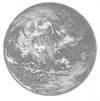Test: Science And Technology - 1 - Class 5 MCQ
10 Questions MCQ Test Additional Study Material for Class 5 - Test: Science And Technology - 1
A simple machine is a basic mechanical device for applying force. Fill in the blank about the screw, which is a simple machine. The screw is a (n) ______ wrapped around a central cylinder.


You are working in MS-Word applications. Which of the following is a volatile memory that stores all the data of MS-Word application that is currently running on the computer?
| 1 Crore+ students have signed up on EduRev. Have you? Download the App |
A shadow is a dark region that is formed when an opaque object is placed in the path of light. Which one of the following is not required for the formation of a shadow?
Which of the following fact is correct about asteroids?
A change in which the substance can get back to its original form is called a physical change. Which of the following is a physical change?
Satellites are heavenly bodies that revolve around a planet. Earth has one natural satellite but many artificial ones. Which of these is not a satellite of earth?
Almost 71% of the earth's surface is covered by oceans. How many oceans are there on earth?
Magnets are materials that attract metal bodies towards themselves. Which one of the following will not be attracted by a magnet?

This instrument is used in submarines to observe activity above the water surface while the submarine is submerged. Which instrument are we talking about?
This planet is the largest of the inner planets. Its surface is mostly covered with water and it appears bluish from space. It revolves on its axis every 24 hours. What is the name of this planet?

|
10 docs|23 tests
|
|
10 docs|23 tests
|

















